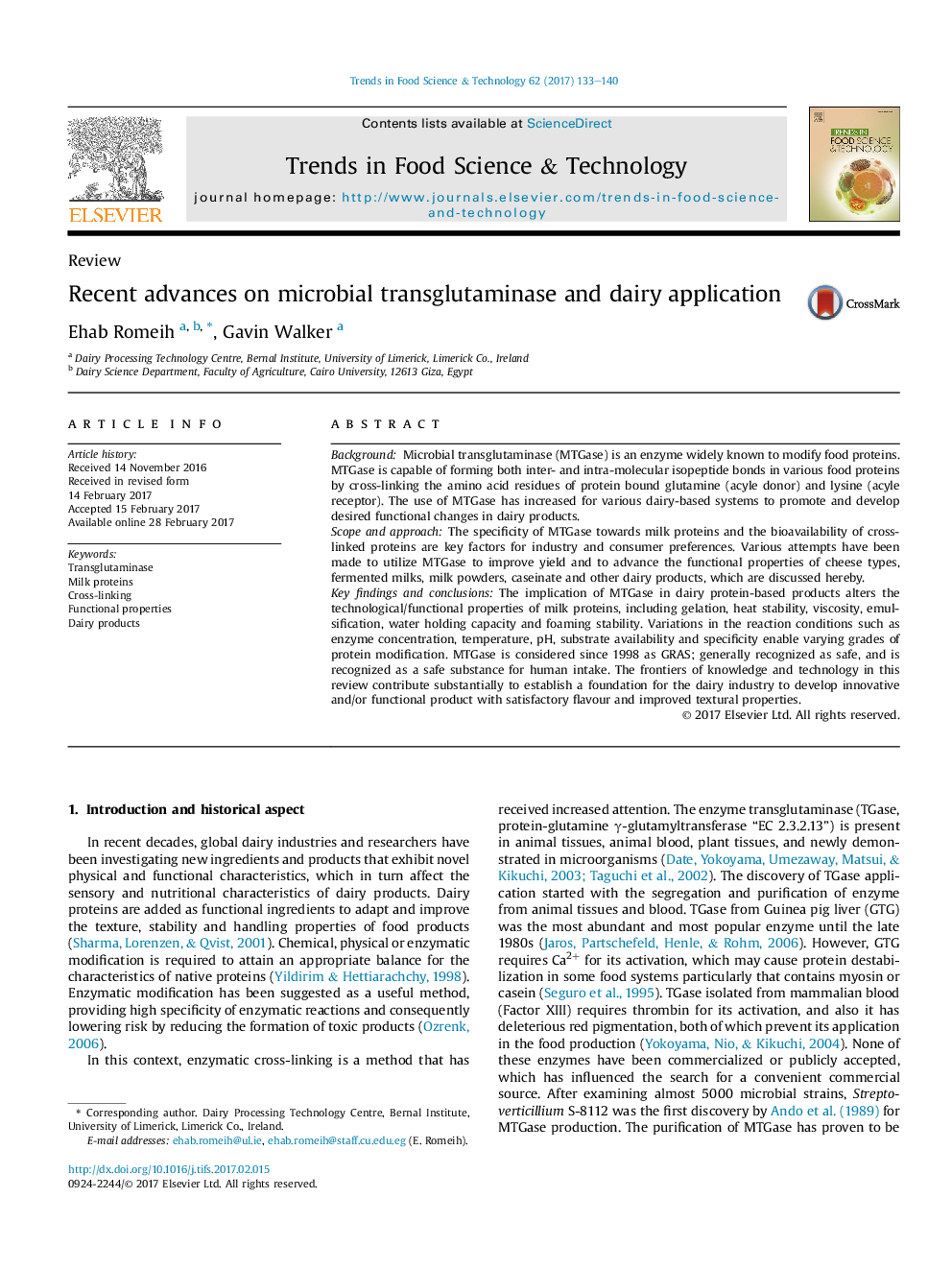| Article ID | Journal | Published Year | Pages | File Type |
|---|---|---|---|---|
| 5523652 | Trends in Food Science & Technology | 2017 | 8 Pages |
â¢Enzymatic properties of MTGase and bioavailability of cross-linked proteins.â¢Specificity of milk proteins to MTGase.â¢Recent application of MTGase in Cheese products, fermented milks and milk powders.â¢Patents on MTGase in dairy products.â¢Food Safety, legislations and labelling for MTGase.
BackgroundMicrobial transglutaminase (MTGase) is an enzyme widely known to modify food proteins. MTGase is capable of forming both inter- and intra-molecular isopeptide bonds in various food proteins by cross-linking the amino acid residues of protein bound glutamine (acyle donor) and lysine (acyle receptor). The use of MTGase has increased for various dairy-based systems to promote and develop desired functional changes in dairy products.Scope and approachThe specificity of MTGase towards milk proteins and the bioavailability of cross-linked proteins are key factors for industry and consumer preferences. Various attempts have been made to utilize MTGase to improve yield and to advance the functional properties of cheese types, fermented milks, milk powders, caseinate and other dairy products, which are discussed hereby.Key findings and conclusionsThe implication of MTGase in dairy protein-based products alters the technological/functional properties of milk proteins, including gelation, heat stability, viscosity, emulsification, water holding capacity and foaming stability. Variations in the reaction conditions such as enzyme concentration, temperature, pH, substrate availability and specificity enable varying grades of protein modification. MTGase is considered since 1998 as GRAS; generally recognized as safe, and is recognized as a safe substance for human intake. The frontiers of knowledge and technology in this review contribute substantially to establish a foundation for the dairy industry to develop innovative and/or functional product with satisfactory flavour and improved textural properties.
